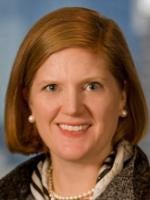Similar to rules providing billing opportunities for chronic care management (as discussed in this McBrayer blog post), relatively new Medicare funds for Transitional Care Management (“TCM”) provide a new path for providers to supplement their Medicare practice with payment for services they may already provide. Beginning in 2013, Medicare, for the first time, allowed providers to bill for thirty days of TCM, incentivizing post-discharge care with an aim to prevent hospital readmission. The Center for Medicare and Medicaid Services (“CMS”) requires five specific elements of TCM to be met before provider reimbursement. Those elements merit review and brief discussion today, while Thursday’s post will discuss five important points of consideration with regard to TCM.
As an initial matter, for purposes of TCM, a Qualified Professional (“QP”) is a physician, physician assistant, nurse practitioner, clinical nurse specialist or certified nurse midwife, and the TCM is billed under two CPT codes – 99495 and 99496 – which will be distinguished below. TCM begins on the day of discharge and continues for 29 days after.

-
Initial Contact
First, a QP must make initial contact with the patient or patient’s caregiver within two business days after the date of discharge from a facility. This contact may be made at the facility itself, but the contact must be made post-discharge. The QP, licensed clinical staff directed by the QP or a non-licensed staff member (however, “incident to” requirements must be met). This contact must be documented with the date and time, the person initiating contact, the method of the contact and a summary of the contact.
-
Medication Reconciliation/Management
Medication at discharge must be documented and reconciled with medication taken pre-admission, which also must be documented. The person reviewing the medication may be anyone also qualified to make the initial contact, although new prescriptions obviously must be made by a practitioner with prescribing authority. Documentation should include both lists of medication above, as well as the qualification of the reviewer and any actions taken, such as new medication orders.
-
Face-to-face Visit
The face-to-face visit must come within seven calendar days of discharge for CPT code 99495, or 14 days of discharge for CPT code 99496. This visit may also be performed at the hospital or other facility post-discharge. Note that the initial contact must come within two business days, but the face-to-face visit must happen with the specified number of calendar days. The QP who performs the visit bills for the TCM. The face-to-face visit can’t be billed separately, but any diagnostic test and procedures ordered or performed on the same day can be. This visit must be documented with the location, date and time of the visit, the services and findings rendered as a result of the visit, the QP’s credentials, and the appropriate findings to support a level of medical decision-making required by the TCM codes.
-
Level of Decision-Making
TCM requires specific levels of complexity of medical decision-making for thirty days after discharge. Code 99495 requires medical decision-making of moderate complexity, while code 99496 requires medical decision-making of high complexity.
-
Non-Face-to-Face Care Management Services
There is no specific number of interactions or quota on time spent on providing TCM services, but the CMS has a list of services that must be furnished to the beneficiary either by the QP or by licensed clinical staff supervised by a QP, unless the QP determines they are not medically necessary. Each non-face-to-face service must be documented with the date and time rendered, the credentials of the person providing the service and the purpose and description of a service.
If a provider meets these five key elements of TCM, the provider can bill for TCM services starting the 30th day after the discharge. If two providers both provide TCM for the same patient in the same time period, the payment for the services goes to the first provider to file a claim.
The next post will discuss five issues of consideration for providers regarding TCM.


 />i
/>i
